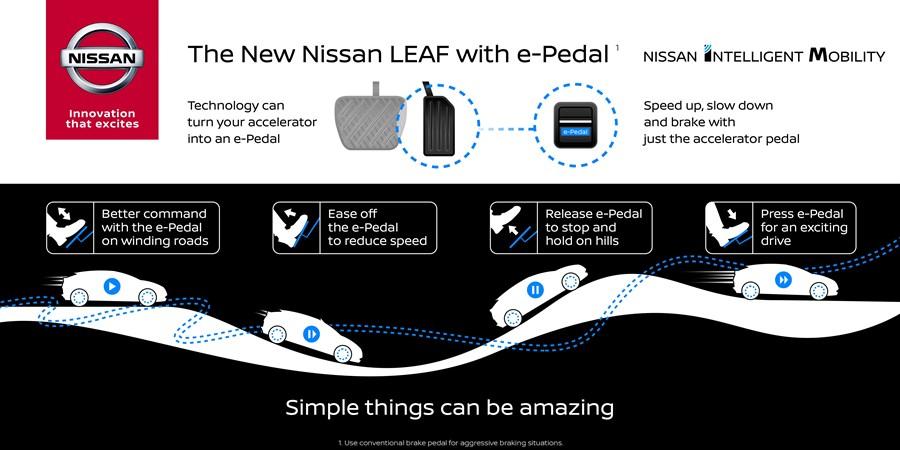Nissan Unveils New One-Pedal 'e-Pedal' Feature For Leaf
Nissan is improving regenerative braking, which has been a common feature among electric vehicles. Their new e-Pedal can control speed changes and braking all with one pedal, which will aid in recharging the car's battery.
Updated May 17 2019, 12:16 p.m. ET
For those who aren’t familiar with electric vehicles, all of them have some form of regenerative braking feature. In order to preserve and even create electricity, the motor goes in reverse and feeds that into the vehicle’s battery. Nissan is adding the ability to control acceleration and braking all in one pedal for their next EV.
On Wednesday, Nissan teased the e-Pedal in a press release. While there will still be a traditional brake pedal for situations that call for it, drivers can press a switch to activate the e-Pedal. When it’s on, speed is still controlled by how hard the pedal is stomped on, but the vehicle will come to a complete stop when the pedal is let go of compared to traditional vehicles continue to coast.
In an infographic that Nissan included in the press release, they pose that the e-Pedal will make drives easier and exciting. Drivers will be under better control when going through winding roads, and the car will slow down when the pedal is depressed. The entire vehicle will come to a complete stop when the foot is off the acceleration pedal, and it can even hang on steep hills.
Nissan claims that, “drivers can cover 90 percent of their driving needs with the e-Pedal.” The goal is to prevent the need to constantly shift between the conventional acceleration and brake pedals. That tends to happen in areas with heavy traffic and urban streets that hit loads of street lights.
Other automobile manufacturers have explored one-pedal driving, such as the Chevy Bolt. They’ve created the “Regen on Demand paddle,” which can generate electricity as drivers are easing their push on the acceleration pedal. GM states that it can add up to five percent more range to the Bolt.
For those skeptical of the regenerative braking system, it’s more efficient than the traditional friction method. Most cars today have brake pads that help produce this friction to slow the vehicle down. Friction is also added from the wheels slowing down on the road. Electric vehicles still have these features, but they’re only used in emergency purposes. This adds many years to brake pads that often need to be changed multiple times through a car’s lifespan.
Nissan revealed last month that the Leaf would have improved range and a sleeker design compared to older models. The new electric vehicle with the e-Pedal will be fully revealed on September 6th in Japan. It’s expected to be in local dealerships shortly after the announcement.

